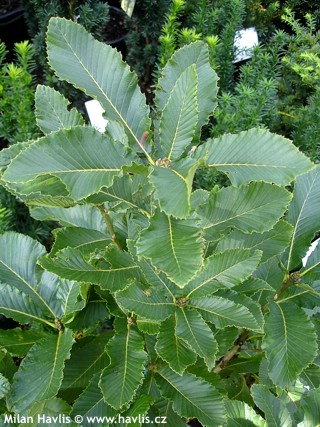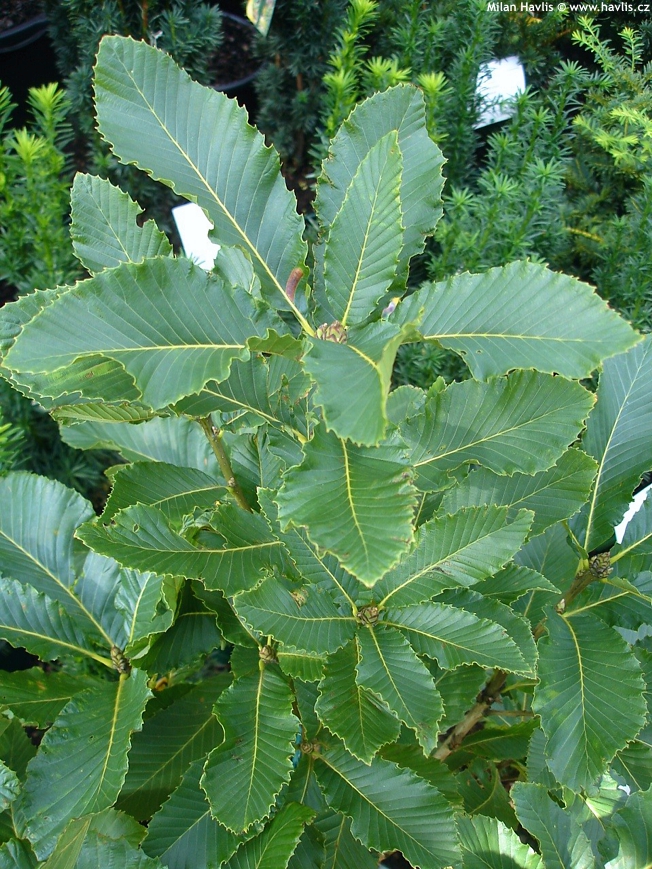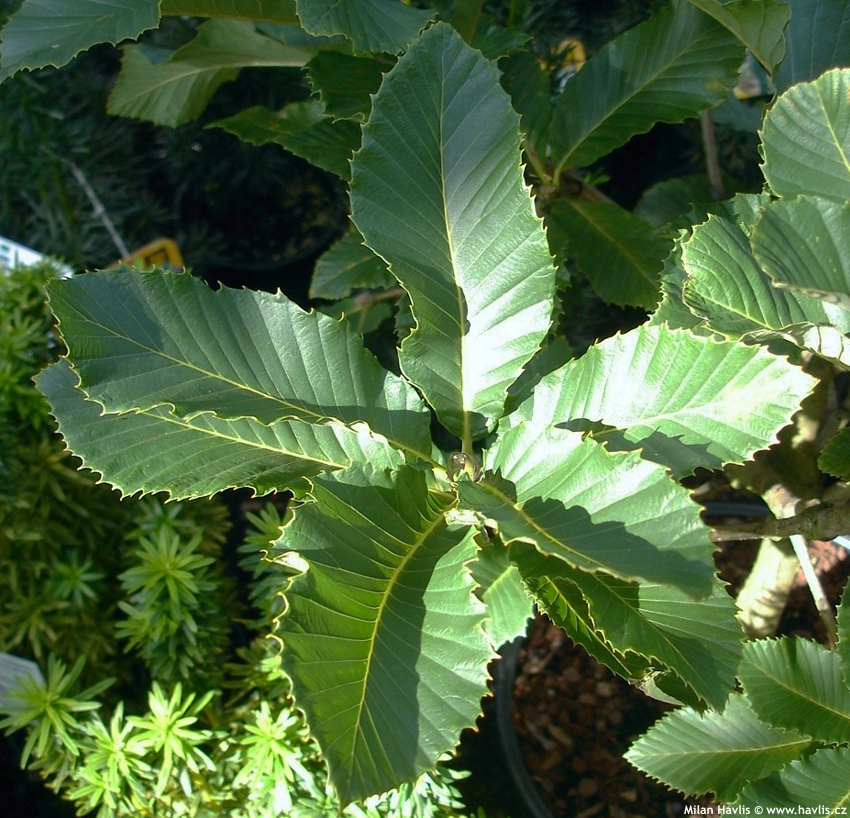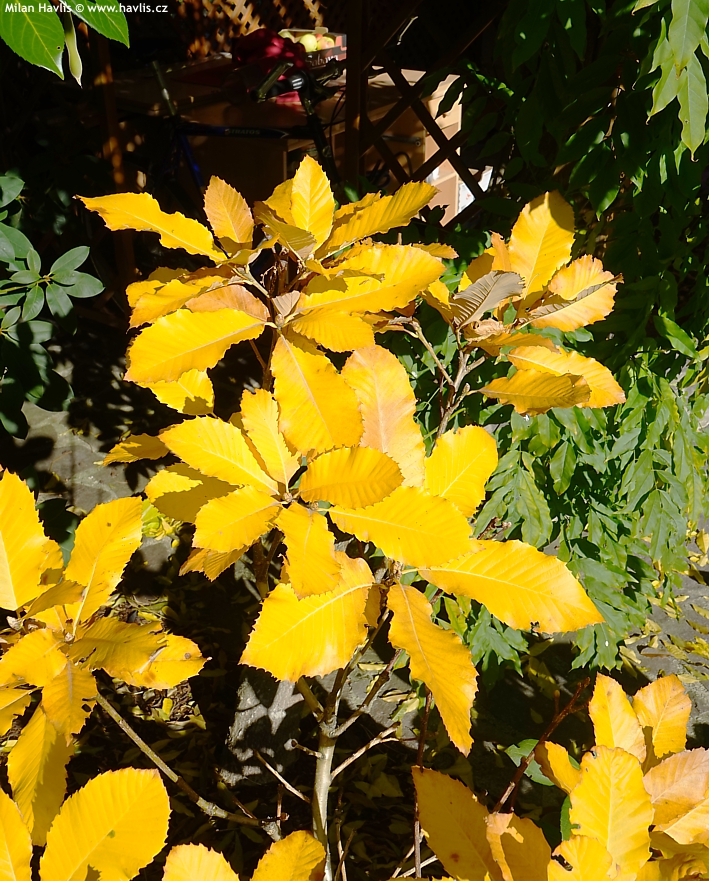Quercus pontica Armenian oak, pontine oak
Quercus
Oaks are common trees of our natural woodlands. They border our ponds, occur naturally in our mixed forests, and make magnificent specimen trees in our parks and arboretums where less common species or rare varieties can be seen.
Armenian oak is one of my most favourite oaks. It produces very large, attractive leaves and the plant itself resembles sea-side flora. Its deciduous leaves can be up to 25 cm long, exceptionally even larger, broadly elliptic to obovate, mid green, soft and hairy when young, changing to smooth and glossy, almost leathery when mature in summer, distinctly toothed at margins. In autumn they turn glowing golden yellow. In May and June appear olive green to golden-yellow flowers formed in 10-15 cm long catkins, followed by dark acorns.
This oak grows rather slowly so you can easily use in small gardens and in some 10 years when it shows a size worth mentioning it can be pruned or clipped to desirable size. Any pruning should be done in early spring before leaves emerge. Thanks to its large leaves it will do miracles in a Mediterranean landscape, or will look great used among mountain pines and large rock to imitate rocky foothills, or in a jungle-type garden with loads of other leaf-shapes in larger sizes. The last one is very popular with children and Armenian oak does not produce any dangerous fruit and is not toxic therefore can do no harm.
Oaks are not fussy about soil type, they can take drought once established but cannot take water-logging. It prefers warm, preferably sunny position. Fully hardy to approx. -28°C (USDA zone 5).
Last update 08-01-2011







































